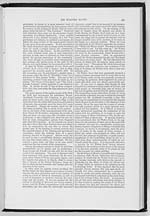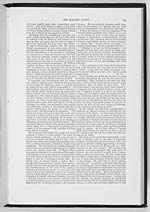332
poorer than they were at the beginning of their
career.
The blow was endured with a magnanimity
worthy of the greatest writer of the age. On the
very day after the calamity had been made known to
him, a friend accosted him as he was issuing from
his house, and presented the condolences proper to
such a melancholy occasion.
"It is very hard," said he, in his usual slow and
thoughtful voice, '' thus to lose all the labours of a
lifetime, and be made a poor man at last, when I
ought to have been otherwise. But if God grant me
health and strength for a few years longer, I have
no doubt that I shall redeem it all."
The principal assets which he could present
against the large claims now made upon him, were
the mansion and grounds of Abbotsford, which he
had entailed upon his son, at the marriage of that
young gentleman to Miss Jobson of Lohore, but in
a manner now found invalid, and which were bur-
dened by a bond for ,�10,000. He had also his
house in Edinburgh, and the furniture of both man-
sions. His creditors proposed a composition; but
his honourable nature, and perhaps a sense of repu-
tation, prevented him from listening to any such
scheme. "No, gentlemen," said he, quoting a fav-
ourite Spanish proverb, "Time and I against any
two. Allow me time, and I will endeavour to pay
all." A trust-deed was accordingly executed in
favour of certain gentlemen, whose duties were to
receive the funds realized by our author's labours,
and gradually pay off the debts, with interest, by in-
stalments. He likewise insured his life, with the
sanction of his trustees, for the sum of �22,000, by
which a post-obit interest to that amount was secured
to his creditors. He was the better enabled to carry
into execution the schemes of retrenchment which
he had resolved on, by the death of Lady Scott, in
May, 1826. Her ladyship had born to him two sons
and two daughters; of the latter of whom the elder
had been married in 1820 to Mr. J. G. Lockhart,
advocate.
Sir Walter was engaged, at the time of his bank-
ruptcy, in the composition of a Life of Napoleon
Bonaparte, which was originally designed to fill only
four volumes, but eventually extended to nine. In
the autumn of 1826 he paid a visit to Paris, in com-
pany with his youngest and only unmarried daughter,
in order to acquaint himself with several historical
and local details requisite for the work upon which
he was engaged. On this occasion he was received
with distinguished kindness by the reigning monarch,
Charles X. The Life of Napoleon appeared in sum-
mer, 1827; and though too bulky to be very popular,
and perhaps too hastily written to bear the test of
rigid criticism, it was understood to produce to its
author a sum little short of �12,000. This, with
other earnings and accessory resources, enabled him
to pay a dividend of six shillings and eightpence to
his creditors.
Till this period Sir Walter Scott had made no
avowal to the public of his being the author of that
long series of prose fictions which had for some years
engaged so much of public attention. It being no
longer possible to preserve his incognito, he per-
mitted himself, at a dinner for the benefit of the
Edinburgh Theatrical Fund, February 23, 1827, to
be drawn into a disclosure of the secret. On his
health being proposed by Lord Meadowbank, as the
"Great Unknown," now unknown no longer, he
acknowledged the compliment in suitable terms,
and declared himself, unequivocally, to be the sole
author of what were called the Waverley Novels.
About the same time the copyright of all his past
novels was brought to the hammer, as part of the
bankrupt stock of Messrs. Constable and Company.
It was bought by Mr. Robert Cadell, of the late
firm of Archibald Constable and Company, and who
was now once more engaged in the bookselling
business, at �8400, for the purpose of republishing
the whole of these delightful works in a cheap
uniform series of volumes, illustrated by notes and
prefaces, and amended in many parts by the finish-
ing touches of the author. Sir Walter or his credi-
tors were to have half the profits in consideration of
his literary aid.
This was a most fortunate design. The new edi-
tion began to appear in June, 1829; and such was
its adaptation to the public convenience, and the
eagerness of all ranks of people to contribute in a
way convenient to themselves towards the recon-
struction of the author's fortunes, that the sale soon
reached an average of 23,000 copies. To give the
reader an idea of the magnitude of this concern�
speaking commercially�it may be stated that, in
the mere production of the work, not to speak of its
sale, about a thousand persons, or nearly a hundredth
part of the population of Edinburgh, were supported.
The author was now chiefly employed in preparing
these narratives for the new impression; but he
nevertheless found time occasionally to produce
original works. In November, 1828, he published
the first part of a juvenile history of Scotland, under
the title of Tales of a Grandfather, being addressed
to his grandchild John Hugh Lockhart, whom he
typified under the appellation of Hugh LittleJohn,
Esq. In 1829 appeared the second, and in 1830
the third and concluding series of this charming
book, which fairly fulfilled a half-sportive expression
that had escaped him many years before, in the com-
pany of his children�that " he would yet make the
history of Scotland as familiar in the nurseries of
England as lullaby rhymes." In 1830 he also con-
tributed a graver History of Scotland, in two volumes,
to the periodical work called Lardner's Cabinet
Cyclopedia. In the same year appeared his Letters
on Demonology and Witchcraft, as a volume of Mr.
Murray's Family Library; and in 1831 he added
to his Tales of a Grandfather a uniform series on
French history. In the same year, two sermons
which he had written a considerable time before, for
a young clerical friend, were published by that indi-
vidual in London, and, as specimens of so great an
author in an extraordinary line of composition, met
with an extensive sale.
The profits of these various publications, but
especially his share of the profits of the new edition
of his novels, enabled him, towards the end of the
year 1830, to pay a dividend of three shillings in the
pound, which, but for the accumulation of interest,
would have reduced his debts to nearly one-half.
Of �54,000 which had now been paid, all except �6000
or �7000 had been produced by his own literary
labours; a fact which fixes the revenue of his intellect
for the last four or five years at nearly �10,000 a
year. Besides this sum Sir Walter had also paid
up the premium of the policy upon his life, which,
as already mentioned, secured a post-obit interest of
�22,000 to his creditors. On this occasion it was
suggested by one of these gentlemen (Sir James
Gibson Craig), and immediately assented to, that
they should present to Sir Walter personally the
library, manuscripts, curiosities, and plate which
had once been his own, as an acknowledgment of
the sense they entertained of his honourable con-
duct.
In November, 1830, he retired from his office of
principal clerk of session, with the superannuation

![]() Universal Viewer |
Universal Viewer | ![]() Mirador |
Large image | Transcription
Mirador |
Large image | Transcription
![]()

